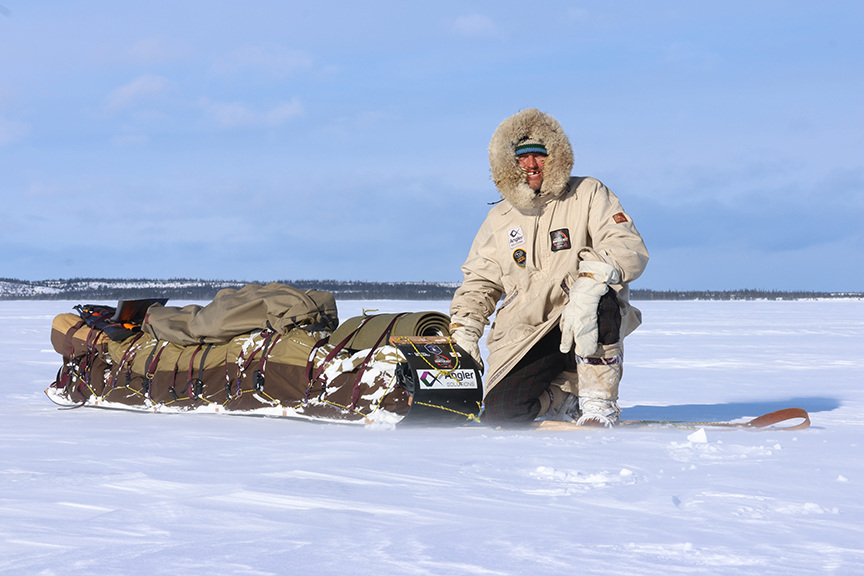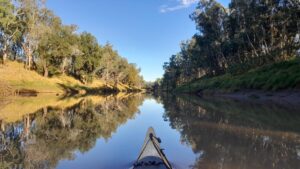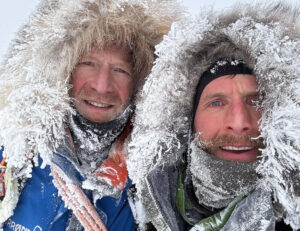Justin Barbour has been home for about 40 days after his year-long journey canoeing, snowshoeing, hiking and biking 3,890km from northern Quebec through Labrador to the southern tip of Newfoundland. “My feet are just coming back to life now,” he says.

The journey from Puvirnituq to the Cape Pine lighthouse is not an iconic route like skiing to the South Pole, but it’s an original route, and he did it his way. That meant being flexible with his decisions. As a one-off project that no one will re-do in the near future, he didn’t have to worry about fine points like “unsupported.” He did what made sense, both from the travel conditions and from how he felt.
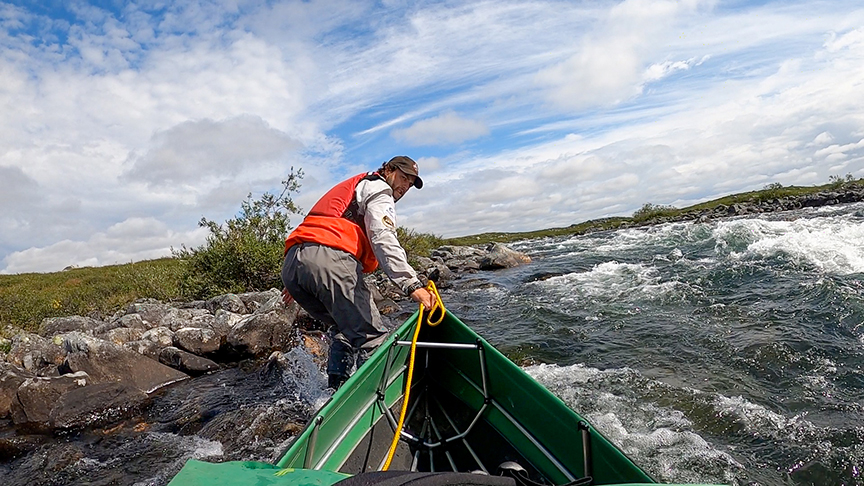

Crossing northern Quebec by canoe in early fall.
Thus, last fall, he didn’t quite make it by canoe all the way to the village of Schefferville before winter set in. He was 210km short. So a helicopter pilot friend picked him up and flew him to Schefferville.
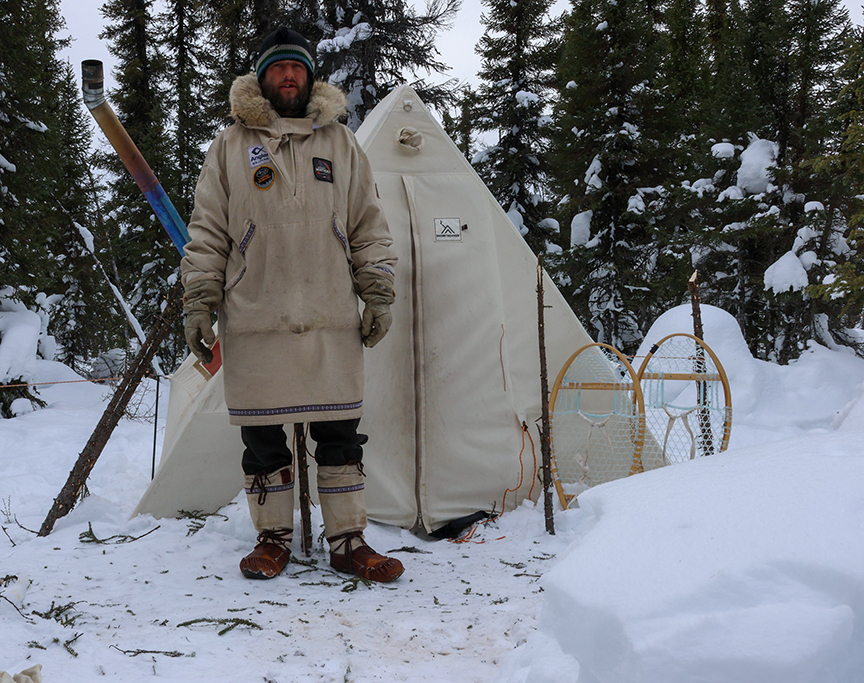
Waiting for winter
Here, he lived in his bush tent just outside town for several weeks until winter had firmly frozen all the lakes, creeks, and rivers that he used as highways. Then on January 1, his friend flew him back to where he had left off, and Barbour started the snowshoe leg of his journey.
Months later, as the subarctic spring was coming on, he had the opposite problem. He’d already traveled 267km from the Trans Labrador Highway through southern Labrador. But in early April, the rivers of southern Labrador were beginning to open up, and he could not drag his toboggan overland through the thicker forests. He needed those waterways.

By the time Barbour reached the Romaine River, the rapids were beginning to open up and the safe banks for hauling his toboggan shrank.
“I didn’t want to wait four weeks [for the canoeing season],” he said. So his helicopter buddy again stepped in and conveyed him back to the Trans Labrador Highway, which he’d first snowshoed across weeks earlier. Here, he decided to mountain bike the length of southern Labrador instead of traveling cross-country. He camped along the wilderness roadside at the end of each day.
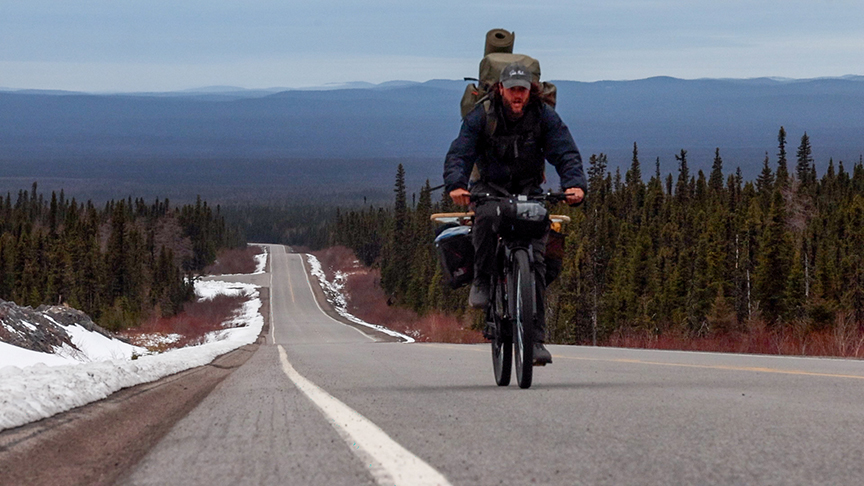
Barbour bikes the Trans Labrador Highway.
Last sections
Finally, he decided that he didn’t want to kayak the 18km or so across the Strait of Belle Isle from Labrador to the island of Newfoundland. It had been raining for days, and “I was starting to wear thin,” he admitted. There was also the additional logistics of getting a kayak over to him. So he took the ferry across, then began to hike across that big island to its southern tip.
When you’re out for a few weeks on a trail that hundreds of people do, like Hercules Inlet to the South Pole, these mechanized shortcuts matter. When you’re out for an entire year on a route all your own, they don’t. They become sensible adaptations in what remains a mega-trek.
Barbour’s final tally of self-propelled travel:
Canoe: 1,150km
Snowshoe: 700km
Bike: 1,500km
Hike: 550km
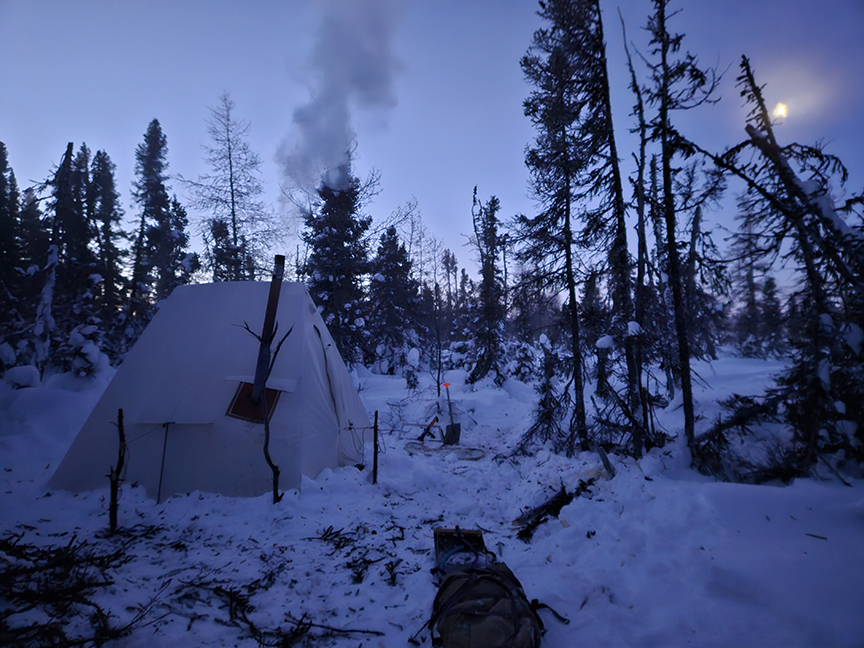
A portable stove and a little wood heated his bush tent up to room temperature, even at -44˚C in early January.
Old-fashioned travel
During his year-long journey, he largely traveled the traditional way, pulling a toboggan and using snowshoes like the region’s Innu people or Labrador’s Height of Land trappers. In winter, his wood-heated bush tent let him dry his clothes at night. While heavier than the modern mountain tent he used during the canoe section in northern Quebec, it also made heavy expedition parkas and sleeping bags unnecessary. “The more you know, the less you need,” he said.
And while he resupplied at several spots, he also hunted ptarmigan and fished along the way.

A catch of ptarmigan.
This was by far Barbour’s longest trek, but it wasn’t his first. In 2017, he trekked across Newfoundland. In 2018, he tried to canoe from east to west across Labrador and northern Quebec — a shorter version of this trip — but started too late in the summer and had to bail after 80 days and almost 1,000km when winter set in.
At the time, Barbour was a teacher in Newfoundland, covering grades K to 12. But by 2019, he’d discovered that the YouTube videos of his solo journeys were popular; some garnered millions of views. He also gave presentations and secured sponsorships. Now, this is what he does.
He has only “loose thoughts ” about what’s next. Maybe he’ll cross Alaska, but that’s a ways off. He plans to spend the next months editing the hundreds of hours of material into coherent stories. 